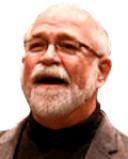Gender
What’s the Feminine Form of "Geezer"?
Should "geezer" be gendered?
Posted August 8, 2022 Reviewed by Ekua Hagan
Key points
- The "geezer," a stock character, shapes our attitudes toward aging.
- Female "geezer" counterparts in fiction and film are harsher than the fictional portraits of men.
The geezer traces an ancient lineage. The senex iratus, a stock comic character in Greek and Roman comedy, a grumpy old father, gullible and ponderous, sometimes comically raging, also shows up in Shakespeare’s plays (Hamlet’s officious Polonius comes to mind), television sitcoms, and Hollywood films.
Edgar Buchanan, who played Uncle Joe in the '60s sitcom Petticoat Junction, was usually seen either rocking or napping on the front porch of the Shady Rest hotel. When awakened, he started complaining. In On Golden Pond (1981) Henry Fonda still played Parcheesi skillfully despite a faltering memory. And television’s Archie Bunker, the loveable old mossback, the senex iratus of the '70s, comically stumbled his way to understanding urgent issues of war and peace, and class, race, and gender.
According to the Google Books Ngram Viewer, a fascinating tool of “culturomics” that samples word usage frequency from millions of printed sources over time, the word “geezer” peaked in English printed sources in the last couple of years. And surely that owes to the aging of the baby boom, the classic pig-through-the-python demographic bulge who refer to themselves wryly or ruefully as geezers.
Then, too, younger generations, partly in reaction and perhaps partly in hope, mean to separate themselves as they strike out for uncharted territory. You know yourself by knowing who you are not. Thus, “fuddy-duddy,” “fogie,” and “old fossil,” are trending upward. “Troglodyte” peaked in around 1870 and then languished, but tied the record again in 2007, likely measuring discontent with people who fell off the swing to modernity.
Geezers: Crusty but Cute
American Westerns abound richly with cranky old characters. Gabby Hayes, who specialized in playing the old coot, after having been wounded by a gunslinger in a black hat, and ministered to by townswomen, protested that he “ain’t had so much fuss over me since a mule kicked my teeth out.” “This is an outrage,” he would say. "A dad-burned outrage!”
Walter Huston, who played another steady old-timer in Treasure of the Sierra Madre, wisely warned the novice prospectors that finding gold was easy; keeping it was the hard part. Yosemite Sam faux-cussed his way through many Looney Toons cartoons. His hair-trigger temper (or should it be “hare-triggered”?) only stymied his attempts to best the wily Bugs Bunny.
John Wayne, in his next-to-last film, self-referentially played Rooster Cogburn, the original tough old bird who had the requisite true grit. Clint Eastwood, appearing as a taciturn young shootist and righteous avenger in his early films, grew into his roles as cantankerous modern grouches, all of them geezers, but with kind instincts and moral certitude. Walter Matthau, as one critic joked, played so many adorable and grumpy old geezers that no one would be able to tell when he in fact grew old.
So. We know the geezer. And the geezer has his lovable side. But what about the geezer’s female counterpart?
What Is a Female Geezer Called?
After reading “Further Advice from the No-Geezing Zone,” Thomas Henricks, a sociologist and prominent play theorist, somewhat devilishly asked what the female geezer should be called. Tom has a habit of asking the key question. And he suggested that “biddy” is a strong candidate.
Words Track Our National Psychology
The word biddy is thought to be derived from Bridget, or perhaps Bridie or Bridey, the typecast 19th-century Irish immigrant housemaid. (The term peaked in popularity shortly following 1860, after a wave of immigrants had fled the terrible famine in Ireland and Irish women found employment as housekeepers in American cities.) Long before we diagnosed the “micromanager” of everyday affairs, “Biddy” was the meddlesome fussbudget, a busybody with a brogue.
According to the Google Books NGram Viewer, “biddy” soared in print usage starting around 1930, and peaked around 1945, not coincidentally, during the American interval of depression and war when the country was more than ready to leave its cares behind, and with them Victorian strictures. (The male counterpart, “stuffed shirt,” peaked in usage around the same time and probably for the same critical reasons.) In that 15-year interval, the term biddy also lost its servant-class associations and began to apply more generally to opinionated or censorious elderly women. Curiously, the term has risen again recently, probably in response to the anti-modern currents in contemporary society that Gen-Xers are good at spotting and calling out.
Though biddy is less invidious and sexist than fellow travelers like “battleax,” “crone,” “harridan,” “harpy,” or, “hag,” all of which carry sharper connotations than geezer, the biddy is still mostly disdainful. With a few prominent exceptions,—Robin Williams’ kindly Mrs. Doubtfire, for example—in popular sentiment and popular films, the biddy doesn’t seem to have often developed an endearing side.
A Sliding Scale of Biddies
Imagine a sliding scale of Hollywood biddies that on the comical end features Edna May Oliver. (See illustration.)

If you have happened to see her brilliant and annoying comic performance as the status-anxious Lady Catherine in Pride and Prejudice (1940) or caught snippets of it on YouTube, you will see the biddy at her sharp-tongued best. On the other end of the scale, and better known, picture the archetypal evil biddy with Margaret Hamilton’s portrayal of Almira Gulch in The Wizard of Oz (1939). Sour, resentful, privileged, thwarted, and harsh, the spinster schemes to have Dorothy Gale’s terrier Toto destroyed for, among other horrible crimes, taunting her cat. (Vacuumed up, by a Kansas twister, and none too soon, she reincarnates in Dorothy’s post-concussion dream as the even worse Wicked Witch of the West—decidedly more hag than biddy.)
The Anti-Biddy Biddy
Referring to the plucky roles she played, male critics often minimized Katherine Hepburn as a biddy. But their judgment fell short of the mark. In her screen personae, and in real life too, she was always too capable, charming, game, and secure to fit the stereotype. Moviegoers knew her as a solo pilot, political columnist, high-profile defense attorney, scratch golfer, and ace tennis player. She memorably portrayed the “psalm-singing skinny old maid” in The African Queen (1951) who, despite her upright, schoolmarmish demeanor, devised a plan to convert Humphrey Bogart’s leaky steamboat into a torpedo aimed to sink the Kaiser’s gunship patrolling nearby. The New Yorker film critic, Claudia Roth Pierpont, wrote that Hepburn’s roles often of the “married maiden” sort, were characterized by “intelligence, independence, and gall” qualities that made men squeamish then but that liberated women celebrate now.
So, Is There a Problem With the Question?
I asked my favorite climate scientist, Lisa Graumlich, (prized high-school classmate and recently retired university dean on an “anti-geeze tear,”) just what a female geezer should be called. Lisa had a strong opinion. And naturally, she questioned the question. Gendering is “so 20th century,” Graumlich told me. She described “waging a quiet campaign to erode the gender binary.” Why should a geezer be male and not female? Why not both? Or neither? In fact, Lisa said, “'geezer’ is, or should be, genderless!”
Even as a bit of a grammar geezer, I say fair enough, by gum and by cracky! Language has a right, even a duty, to migrate. American English is especially flexible and receptive among world languages, quick to recruit new usages and welcome novel vocabulary. We outgrow our old linguistic habits and our dated cultural associations. This openness reflects our multicultural demography, our democratic heritage, our yearning for innovation, our quest for technical mastery, and our appetite for opportunity, mischief, exploration, and play.
Almira Gulch as a geezer? OK. Sure. Why not?
References
Lisa J. Graumlich, Subalpine Tree Growth, Climate, and Increasing CO2: An Assessment of Recent Growth Trends, Ecology (1991).
Carolyn Korsmeyer, Charlotte’s Story, Touchpoint Press (2021).
Claudia Roth Pierpont, “Born for the Part,” The New Yorker (July 14, 2003).




